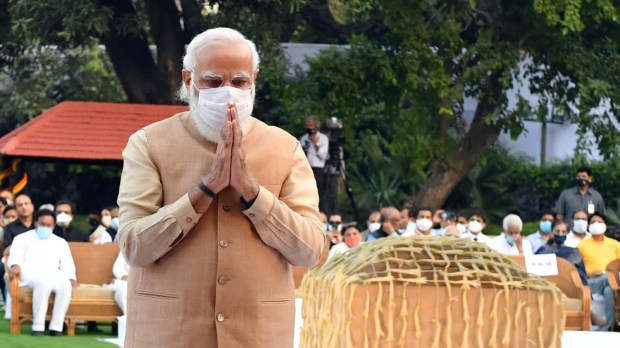Pope Francis will receive Indian Prime Minister Narendra Modi at the Vatican on October 30. This historic audience—the two men have never met—will take place on the sidelines of the G20 meeting in Rome.
Mark von Riedemann, chairman of the editorial board of the Aid to the Church in Need (ACN) report, explains to I.MEDIA what is at stake in such a meeting.
He refers to the situation of Christians and other minorities in India and warns in particular about the rise of Hindu nationalism.
How do you react to the announcement of this meeting?
ACN welcomes the news of the first meeting between Indian Prime Minister Narendra Modi and Pope Francis. It’s an important sign, not only for Christians but also for all religious minorities in India. The hope is that Pope Francis can encourage a culture of dialogue between faith groups and that Christians, and people of other faiths in India, will be understood and recognized as full Indian citizens in the multicultural context of the country.
What is Narendra Modi’s relationship with the Catholic Church in India?
India is a multi-religious democracy with a rich history of religious diversity and pluralism. According to the World Religions Database, Hindus make up 72.5% of the population, Muslims 14.5%, and Christians only 4.9%. They are therefore a small but active minority.
The Indian constitution guarantees freedom of religion, and the country has a distinct form of secularism that strives to treat religious traditions equally. On the ground, too, relations between religious groups are generally very good.
However, the influence of secularism has diminished since Prime Minister Narendra Modi and his party—the Bharatiya Janata Party (BJP)—came to power in 2014. This has manifested itself in the insistence of various instances of government, both at the federal and state levels, on enacting laws restricting the religious freedom of individuals. This was evident in our Religious Freedom Report released last April.
You mention your report. Why did ACN place India in the red list of countries on religious freedom?
Prime Minister Narendra Modi’s party—which returned to power with a landslide victory in the 2019 general election—has offered a renewed appeal to a decades-old movement: Hindu nationalism. It’s the largest religious nationalism movement in the world and is centered on a primarily ethno-religious identity. It has strong support in the conservative states of the “Cow Belt” region in central and northern India.
The BJP, with its philosophy of Hindutva—which promotes the creation of a powerful Hindu state—won nearly 40% of the vote in 2019.
ACN refers to this recent phenomenon, visible not only in India but in many Asian countries, as “ethno-religious nationalism.” This refers to the promotion of ethnic and religious supremacy in some Hindu and Buddhist-majority countries in Asia, which leads to even greater oppression of minorities.
India is the most extreme example. With a population of nearly 1.4 billion, the country is both the world’s largest democracy and the one with the largest and most virulent religious nationalist movement.
Why is this so?
Since the 1990s, political life in India has become more competitive, and a growing number of Indians have been attracted to the Hindu nationalist message that India’s culture and national identity are essentially Hindu. The BJP has used this cultural and nationalist agenda to undermine religious freedom and other basic civil liberties. It has targeted Muslims and Christians on issues such as cow slaughter and religious conversion.
The many Asian countries—but also other populist governments around the world—plagued by ethno-religious nationalism are experiencing a combination of democratic backsliding and increasing religious repression.
For example, as the country-by-country reports indicate, democracies such as India, Myanmar and Sri Lanka, which have been most deeply marked by ethno-religious nationalism, are increasingly becoming “hybrid” autocratic-democratic regimes. That is, they combine regular elections with severe restrictions on basic constitutional rights such as religious freedom.
Could this historic meeting between the pontiff and the prime minister lead to the announcement of a trip by Pope Francis to India?
The last time a pope visited India was when St. John Paul II visited in 1999. Pope Francis has expressed a desire to visit the country. According to UCA News, on a flight home from Georgia and Azerbaijan on October 2, 2016, Pope Francis said he would “almost certainly” visit India and Bangladesh in 2017.
In the end, the government never confirmed the invitation and Pope Francis only visited Bangladesh and Myanmar—much to the disappointment of the Indian Christian community.
A papal visit is the fervent hope of Indian Christians. It would be a strengthening of their faith and a sign of their unity and belonging to the universal Church.
What could a papal visit bring to India and to Christians?
As Pope Francis’ travels around the world attest, the Holy Father places great importance on the need for interreligious dialogue. His efforts have been rewarded with a rapprochement between Christians and Muslims, including a 2019 meeting with Grand Imam Ahamad Al-Tayyib of Al-Azar, leader of the Sunni Muslim world, followed by a 2020 meeting of the same two religious leaders in the United Arab Emirates to co-sign the Document on Human Fraternity for World Peace and Living Together.
Pope Francis’ March 2021 visit to Iraq—his first to a Shiite-majority country, marking the first-ever meeting between a pope and a grand ayatollah—again resulted in a deepening of interfaith dialogue. At the end of the meeting, Grand Ayatollah Sayyid Ali Husaini Sistani affirmed “his concern that Christian citizens may live like all Iraqis in peace and security, and with their full constitutional rights.”
Interfaith dialogue was also a focus of the visit to Bangladesh and Myanmar. This hope is also for relations between all religious communities in the great nation of India.

